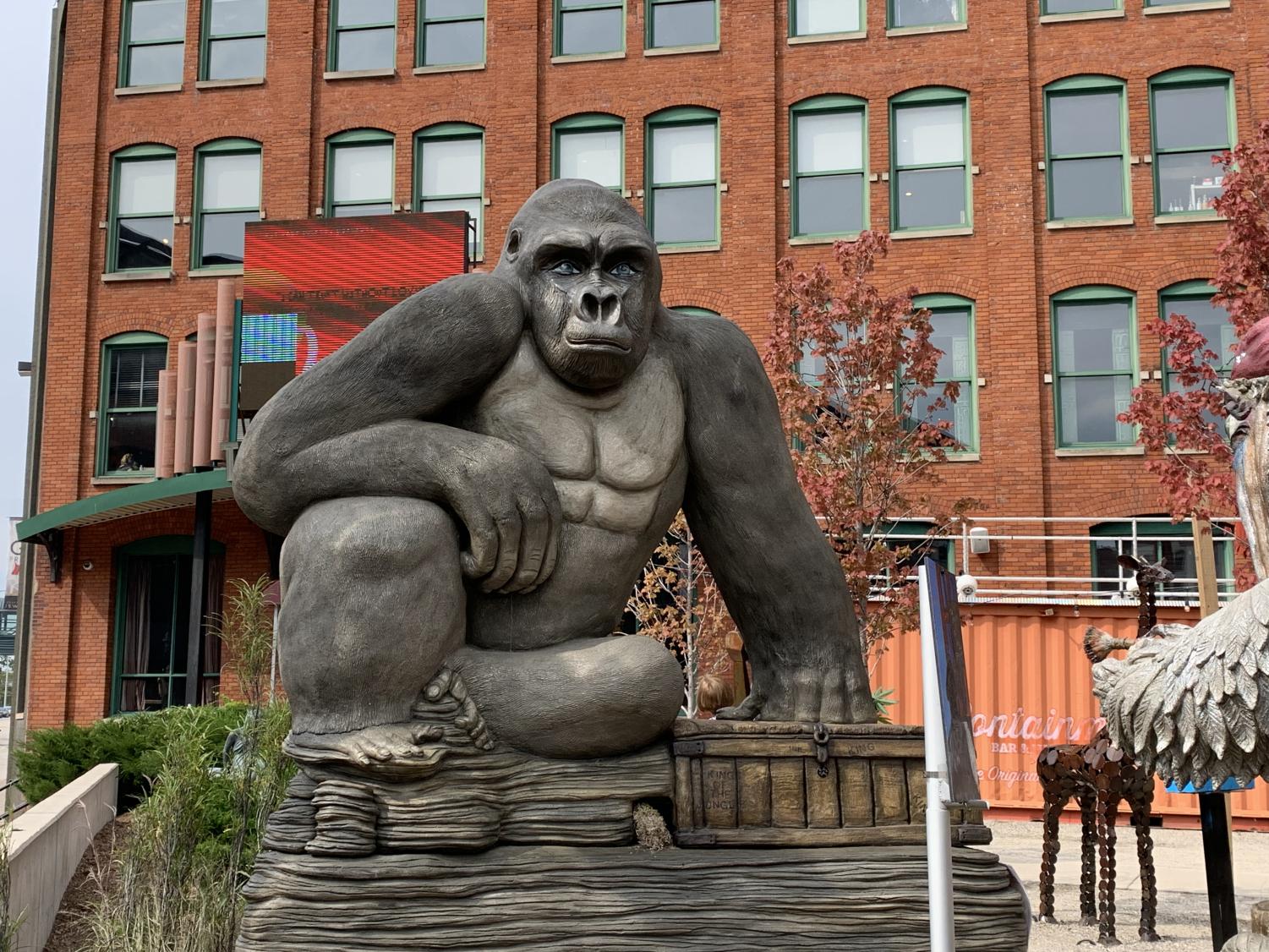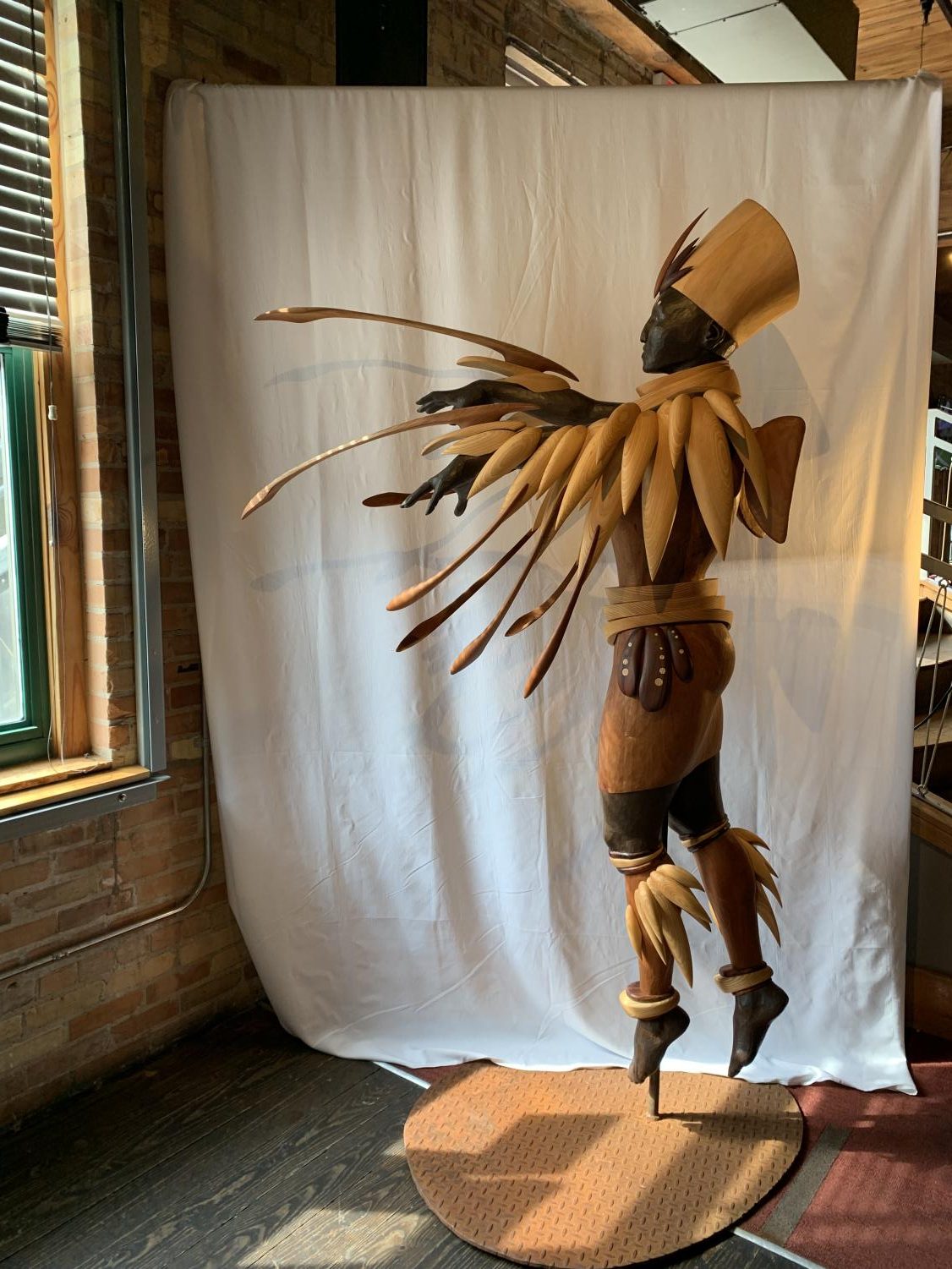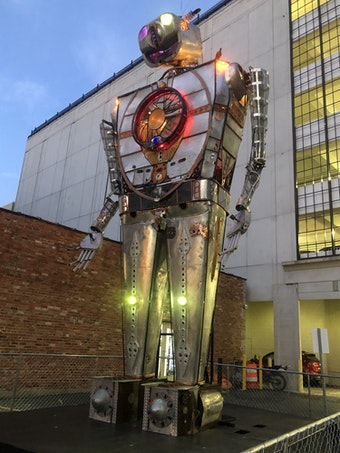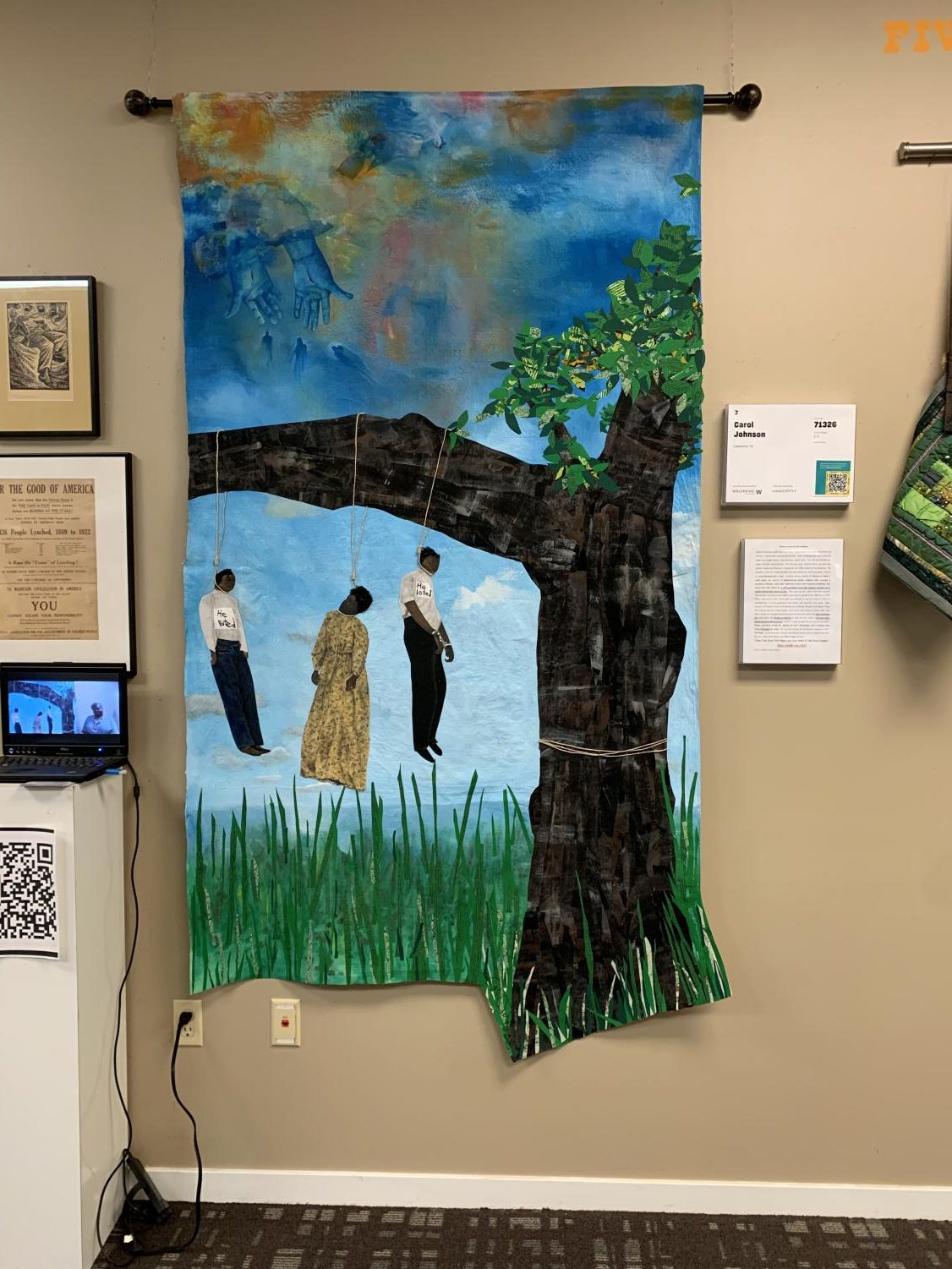The good, the bad and the powerful of ArtPrize 2021
Oct 15, 2021
As I stepped out of my car on a gray Saturday on the final weekend of ArtPrize, the streets of downtown Grand Rapids pulsated with commercialism. What should have been a showcase of amateur art that furthered the discussion of culture and society, ended up revealing itself as a means of maximizing profits for local businesses. And while that support for local businesses in a time of needed revenue is important, it shouldn’t have taken away from the art itself.
The entire event was a scavenger hunt. While you knew where art pieces were located by means of a simple, “ArtPrize Venue” label outside of buildings, you didn’t know what you were going to get. Some places offered entire showcases that reminisced of downtown art galleries, while others had between one to five pieces of art. It was clear that the places who offered the least amount of art were more focused on attracting people to their own business.
And while I know that this seems like I’m being tough on ArtPrize, I want people to understand that there were moments of it that I thoroughly enjoyed. While the aspect of a scavenger hunt style art showcase isn’t my preferred viewing experience, it did offer some great surprises. From a gallery style showcase that loops around a dining area where you can see a chef preparing a meal and a waitress filling a cup with diet cola, to a step inside the monstrous history of our nation, ArtPrize wasn’t perfect, but it didn’t need to be.
The Good
One of the best experiences I had at ArtPrize was walking around local restaurant and nightclub, The B.O.B., and actually taking in some meaningful artwork. This location has become a popular landing spot for ArtPrize consumers because of its outdoor centerpiece: a 10-foot sculpture of a gorilla, sitting by and protecting his secret chest of treasure, looking out to the people as if telling them, “I’m the king of this shit.” Now I’ll touch on this sculpture later on as I address the negatives of ArtPrize, but what I think this piece actually does cleverly is bring in people to the establishment to view the actual art on display.

When you walk in one of the first things you’re met with is an American flag themed piece that puts a menacing face of a spirit at the center of the work. You are instructed to move around while standing in front of the piece so that everything moves while you move. One of the most interesting aspects of this piece is that when you kneel down in front of the spirit, the straight-lipped face turns into a demonizing smile that feels like a message of America looking down on its people as it establishes its power.

Now I’m no art critic, so I won’t ramble on about the metaphors it may or may not stand for, but I will say that its effect left a great impression on me, which is what art should do.
As you continue to walk around and look at the art hung on the walls or displayed on tables, and in one instance, on a rotating platform, you get to hear the artists talk about their work.
You get to overhear a husband and father of one describe how he used the measurements and characteristics of his wife’s body and daughter’s personality to assemble and create a wood carved statue of an African warrior.

You get to hear an artist talk about a canvas made entirely from tree bark and how the porcupine on the outer region of the canvas was the hardest to make because of the many layers of shaved bark she had to piece together in order for her little friend to actually feel like its physical self.
Hearing the artists talk about their work added another element that I wasn’t expecting. You hear the passion and the love that they put into what they create and you can’t help but smile. This aspect of ArtPrize where the artists are physically standing by their work, offering commentary on how they created what they did, is one of the best because you’re not only learning about the process of art, but you’re also learning about the visionaries who carefully craft their artwork.
The Bad
Now as I mentioned before, one of the signature attractions of ArtPrize this year seemed to be the gorilla statue outside of The B.O.B. I say attraction because that’s what it is. It feels like something that belongs outside of an amusement park with the name “Big Ape’s Fun Place.”
There’s another such attraction just a couple of blocks over from The B.O.B that stands at a towering height of what seems like 30-feet tall. This would be a mechanical robot who shoots fire out of its hands, face and shoulders, and whose chest is glowing red with a man inside controlling this metallic behemoth.

While these attractions are a visual treat, what is there to actually gain beyond the wowing factor one might feel? What ArtPrize does well is bring in eyeballs, but when your eyeballs are doing all the work and your mind is taking a smoke break, it may be time to move on and find the actual art hidden in a dark corner by the bathroom.
While these theme park attractions have their faults, nothing is worse than the hip, outdoors store promoting itself as an “ArtPrize Venue” who’s actually displaying just one painting above the entrance doors in order to reel in potential customers. Nothing says art like a painting surrounded by over priced North Face and Patagonia jackets.
Oh, and of course, I can’t forget about the four dimensional pieces of art strung together with different neon colored pieces of thread that look like a tiny light show hung under a set of stairs in the downtown market between the fresh sushi stand and the artisanal cheeses.
What I’m trying to say is that even though some of these local businesses contain real pieces of art, what they’re promoting isn’t the art at all, but rather what they offer as a business. When commercialism is put before art during an event literally titled “ArtPrize,” you may need to rethink your branding going forward.
The Powerful
When you come to major events like these that only happen once a year, you’re always on the lookout for the thing that will linger with you well beyond the time you leave. In this case, it was visual designer Carol Johnson’s pieces that were displayed inside the we are LIT bookstore.
When you walk into the tiny, somewhat compressed bookstore, you’re met with a flurry of novels by Black authors. The latest Colson Whitehead work sits right next to Michelle Obama’s book, whose work is next to a book by hip-hop artist Rick Ross.
The context of where the art is located is important because it’s a local bookstore whose contents are by non-white artists. While you’re met with these multicultural novels, you’re also met with a piece of art that displays three Black people being hanged.
The piece is a statement of America’s history. While you see the three Black people being hanged on a thick tree, you also see the words, “He Voted,” pasted on two of the Black men’s chests. Above them in the blue, orange and yellow tinted sky are two hands reaching out to welcome the three spirits to heaven. To the right of this piece, which is titled, “Giving Voice to the Voiceless,” Johnson explains her artwork from the point of view of those who have passed on from the lynchings that took place in America from the 1800s up to 1970.

Next to this piece of art and Johnson’s description hangs another work from Johnson, which displays the names of the people that were lynched in each state of the U.S. As you look up at the giant black piece of cloth with every name stitched in gold, you can’t help but feel the pain. The pain that a certain race of people underwent from the minute they were dragged to the U.S. and the pain they still suffer to this day.
Johnson’s piece of statement art is what events like ArtPrize need. Located in the heart of a city where almost every face you see is white, it’s important for those people to know what their race did to another’s for hundreds of years. Like Johnson says, “The Rope will treat men, women, and children all the same no matter what color they are.”





















